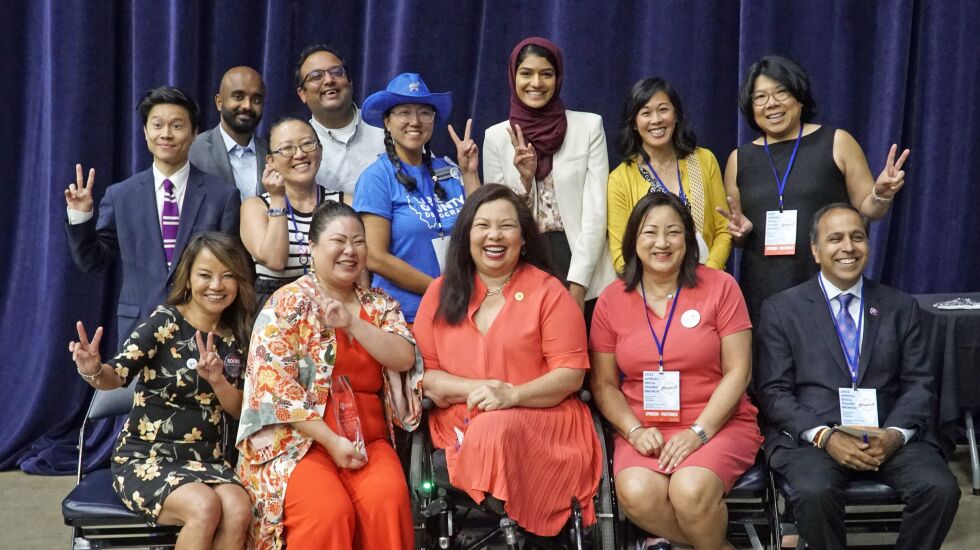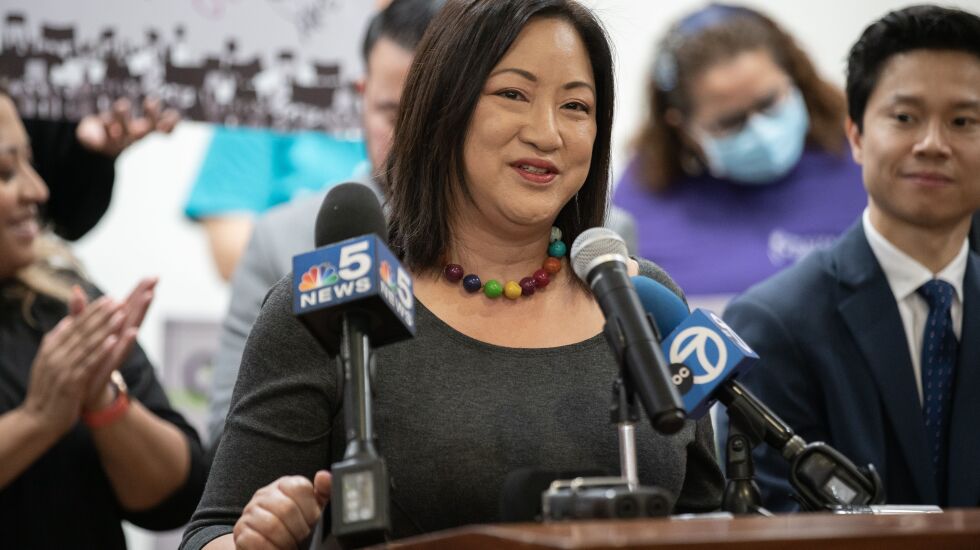
In 2016 I became the first Asian American elected to the Illinois General Assembly. For two years, I was there alone among the 177 members of our two chambers, representing the 600,000-plus Asian Americans in Illinois. I was eventually joined by four others. On Election Day, our caucus increased to nine — effectively accomplishing an 800% increase in six years.
How did this happen and why does it matter? In Illinois, Asian Americans were not elected to a highly visible office in government until 2011, when Ameya Pawar became the first Asian American elected to Chicago City Council. The following year, Tammy Duckworth won her congressional seat, the first Asian American elected to Congress in Illinois. In 2016, Josina Morita and I appeared on the ballot with Duckworth when she ran for Senate.
It was perhaps the first time in a Cook County election, in my state house district, where voters saw three Asian American women together on a single ballot.
The drought of Asian Americans in elected office in most states besides California and Hawaii is not because our population is a small percentage, or that there is any truth to the misconception that Asian Americans are somehow “not politically inclined,” or unwilling to get involved or “rock the boat.”
The actual explanation is inextricably tied to structural racial inequality that has shaped how our social, cultural, political and economic institutions have developed.
Discrimination in immigration
A 1792 law governing naturalization made it impossible for immigrants from Asia to ever become American citizens. An 1875 law made it inordinately difficult for Asian women to enter the country, as they were all categorized as prostitutes and of low moral character, The 1882 Chinese Exclusion Act singled out an entire Asian ethnic group and with a few exceptions, prohibited them from legally immigrating. In 1924, immigration from all other parts of Asia (except the Philippines, at the time a U.S. colony) was cut off.
It wasn’t until the 1940s that some of these restrictions began to loosen. In the 1950s, the ability of Asians to become naturalized citizens was restored, and in 1965, major reforms to our immigration system resulted in waves of Asian immigration that still shape our demographics today.
Inequitable immigration laws kept the Asian American population artificially low for most of the 20th century. There were fewer intact families that could produce a significant U.S.-born citizenry. A majority of Asian residents could never legally become citizens and participate in our civic institutions in a meaningful way. Most significantly, urban political organizations, or political “machines” that operated in every major city, had zero incentive to recruit Asian Americans because they held no political value as they could not vote.
Excluded from the patronage operations that led European immigrants to jobs in city, state and county government, law enforcement and political office, Asian Americans were not well-positioned to run for office — and for the most part, were hobbled from even being included in the process.

In the first couple decades of the 2000s, the status quo started changing. Shifting immigration patterns since the 1960s changed the face of cities. A generation of American-born children of immigrants came of age and benefitted from learning about the civil rights movement and the Third World Student Movement, which gave birth to Ethnic Studies and Asian American Studies. Patronage systems weakened, spurred by stricter regulations against political patronage and corruption, demographic shifts and a new generation of politically involved and experienced individuals who didn’t see their racial background as an impediment.
Many of us who became the “firsts” came to Illinois from other locales, usually places where Asians or Asian Americans in leadership positions were not unusual. Morita and I grew up in California. Duckworth grew up in Hawaii. Pawar, Raja Krishnamoorthi and Ram Villivalam trace their heritage back to the largest democracy in the world, India.
Perhaps there is truth to the idea that one must first “see it to be it.”
On Tuesday, Asian Americans broke multiple records. The number of Asian Americans in the Illinois General Assembly has increased almost tenfold since 2016 and also has a historically diverse representation: Sharon Chung will be the first Korean American, Hoan Huynh the first Vietnamese American. We will have three South Asians: incumbent Sen. Villivallam, Kevin Olickal, and Nabeela Syed. Abdelnasser Rashid will be the first Palestinian American, and he, along with Syed, will be the first Muslim members.
They will join me, Jennifer Gong-Gershowitz and Janet Yang-Rohr, three women of Chinese American heritage.
With these numbers, Asian Americans come closer to equitable representation for the state’s fastest-growing population. We’ll be able to advocate for our communities so that it will not be possible to make policies “about us without us” and we will more effectively fight for resources our constituents need.
State Rep. Theresa Mah represents Illinois’ 2nd District.
The Sun-Times welcomes letters to the editor and op-eds. See our guidelines.
The views and opinions expressed by contributors are their own and do not necessarily reflect those of the Chicago Sun-Times or any of its affiliates.







